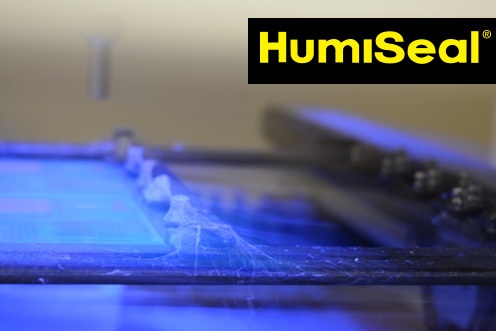So, you’ve spent a considerable amount of time setting up your conformal coating process only to observe the dreaded cobwebbing effect once you start applying the material. Well, in this blog post, I’m going to run through the common root causes and provide some simple solutions you can take to get you back to applying your coating in a defect free manner.
What is Conformal Coating Cobwebbing?
Cobwebbing is the application defect where you see strands or wisps of dried coating floating around the immediate area where the coating is being applied. Users have different names for this. Cobwebbing, spider webbing and cotton candy are all terms that are used to describe this application defect.

Why Do I Get Cobwebbing on My Application?
Now, let’s take a deeper look to understand what causes this application defect. The reason is quite simple. Cobwebbing typically occurs only when the coating is being applied by atomized spray. When a coating is being applied via atomized spray, air is being applied to the liquid coating in the application valve (usually at the nozzle) to break it up into smaller droplets. These droplets contain a mixture of solvent and thinners as well as the base conformal coating resin. Cobwebbing occurs when these small droplets contain too little solvent or thinner, the atomization pressure is too high or the distance between the application nozzle and the substrate is too high. In effect, the droplets are drying out in mid-air which results in dried coating floating around the application area.
How Can I Fix This Issue?
Ok, so now that we have a basic understanding of what causes cobwebbing, we can take a look at the steps users can take to fix the problem and get back to applying the coating in a defect free manner. Each of the three typical causes for cobwebbing that I’ve identified above can be easily addressed.
- Mix ratio of solvent / thinner to coating
- Simply increase the amount of thinner mixed with the coating. We often use 1:1 or 2:1 (coating to thinner) as a starting point for our mix ratios, however, certain coatings and thinners can require the user to adjust (either up or down) this ratio to best suit their unique application process. Variations in application valves, fluid delivery and electronic assembly design layout, as well as the end customers final thickness requirements means that there’s no one size fits all when it comes to setting up your application process and especially the mix ratio of thinner to coating. Increasing the amount of thinner in the coating mixture will prevent the atomized droplets from drying out before they reach the substrate.
- Atomization pressure
- When valve atomization pressure is too high it can effectively “boil” the solvent or thinner in the coating mix due their low vapor pressure. The thinners and solvents used in most conformal coatings have low vapor pressures by design to reduce the amount of drying and cure time of the applied liquid coating. During the application setup process, users should start with an atomization pressure set to the lowest possible setting and increase until the coating comes out in an even and consistent width. If you observe cobwebbing, then the atomization pressure is too high and should be lowered.
- Valve height
- When the application valve is too high, the thinner / solvent in the atomized droplet will evaporate before reaching the substrate. Due to the wide variation in electronic assembly layouts, it’s not realistic to expect to be able to set the valve at one height and let the program run. For most applications, the user will need to program the valve in such a way where the valve height will change based on the topography of the underlying substrate. When this occurs, the user should fine tune the combination of atomization pressure and valve height to ensure cobwebbing is avoided.
So, as discussed above, cobwebbing is usually a result of one or more of the above conditions. It’s not without reason to expect that to fully eliminate the application defect you will need to address at least a couple of these root causes. The good thing is that with a little diligence you should be able to quickly adjust each and see results immediately.







